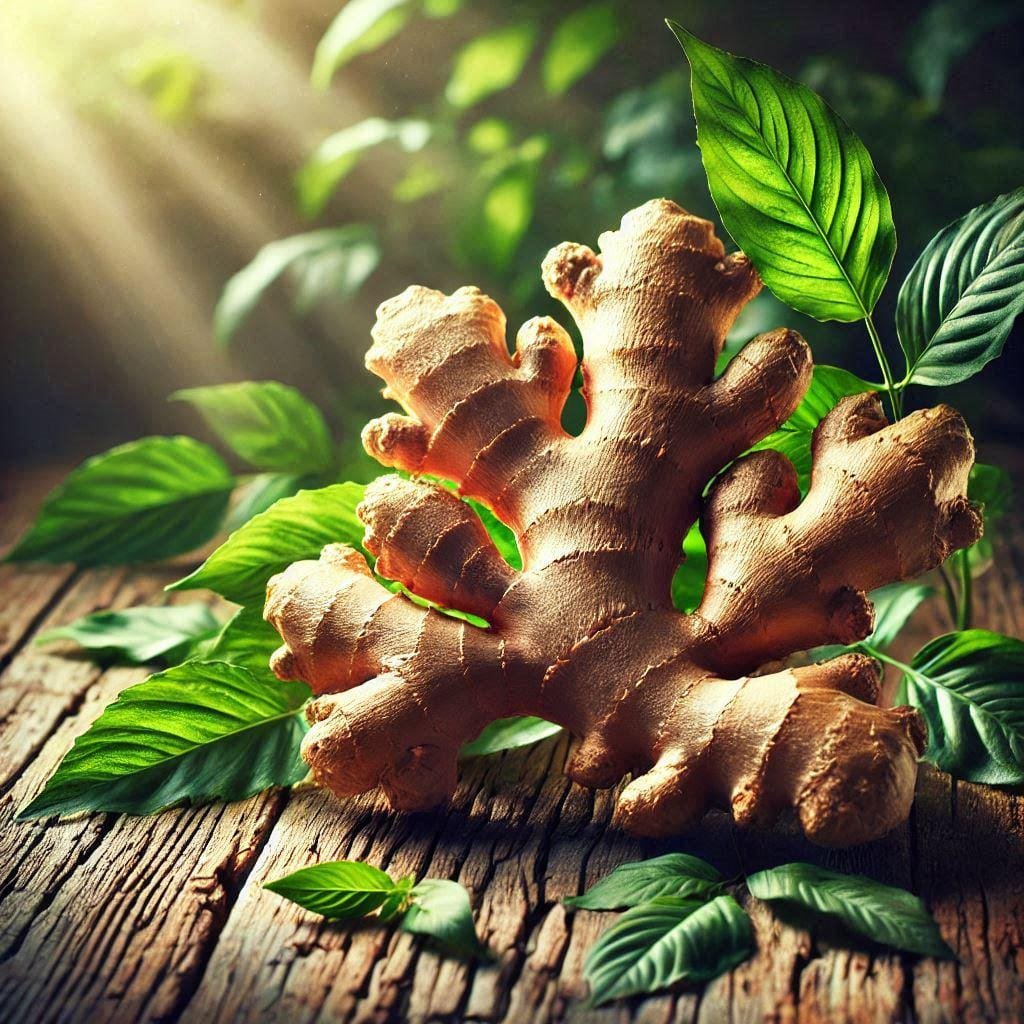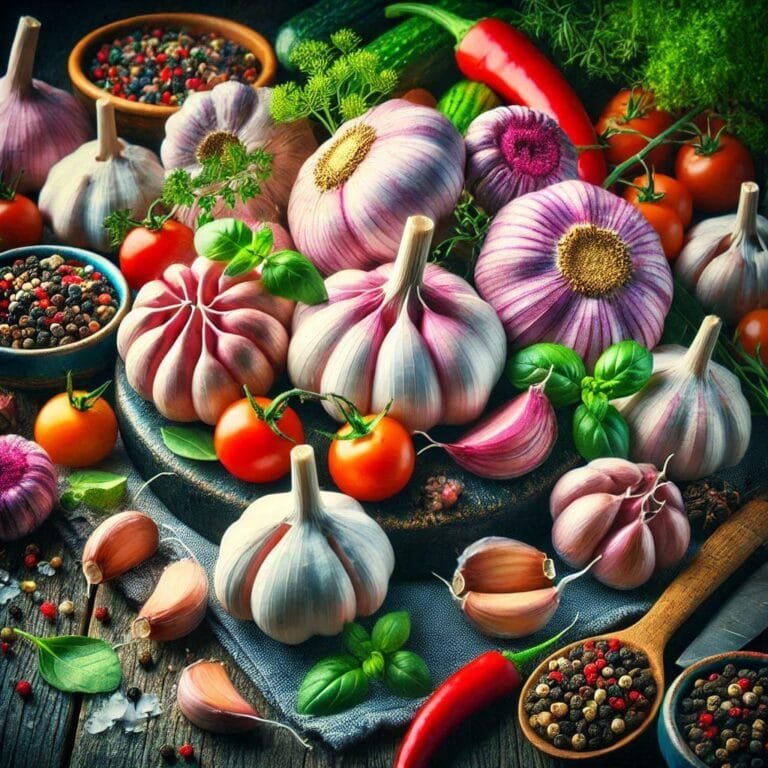A Comprehensive Guide to Ginger: History, Benefits, and Uses

The Origins of Ginger
Ginger, scientifically known as Zingiber officinale, boasts a rich history that spans thousands of years, dating back to ancient civilizations. Originally native to Southeast Asia, ginger has been cultivated for its culinary and medicinal properties since at least 5000 BCE. Its utilization can be traced through various ancient texts, highlighting its importance in the daily lives of those who thrived in these early cultures.
In ancient Indian society, ginger was considered a vital spice and was frequently mentioned in texts like the Ayurvedic scriptures, where it was attributed numerous health benefits. Similarly, in China, ginger has been used for over 2000 years, finding its place in traditional medicine to promote digestion and enhance overall wellness. The Chinese classic, “Shennong Bencao Jing,” even acknowledges ginger’s therapeutic qualities, solidifying its status as a staple in various cultural practices.
Ginger eventually made its way to the Mediterranean through trade routes, becoming popular among the ancient Greeks and Romans. They valued ginger not only for its culinary uses but also for its ability to treat ailments. The spice was so prized that it became a significant commodity along the Silk Road, indicating its high demand across various regions.
As ginger spread globally, cultivation practices evolved. By the Middle Ages, ginger was grown in Europe and became a symbol of wealth due to its cost and rarity. European explorers subsequently introduced ginger to the Americas, where it adapted well to the climate and further enriched the agricultural diversity of the continent.
Through its long and storied journey from its origins in Southeast Asia to worldwide cultivation, ginger has maintained its relevance, integral to both culinary traditions and health practices. Appreciated across cultures, ginger continues to be celebrated for its versatility and myriad benefits in modern society.
Nutritional Profile
Ginger (Zingiber officinale) is not only celebrated for its distinctive flavor and aroma but also for its impressive nutritional profile, which contributes to its status as a superfood. Rich in essential vitamins and minerals, ginger provides numerous health benefits that extend beyond its culinary uses. The key components of ginger include vitamins such as vitamin C, and B vitamins including B6 and riboflavin, along with minerals like magnesium, potassium, and manganese.
Vitamin C is a potent antioxidant that plays a crucial role in supporting the immune system and promoting skin health. It helps in the synthesis of collagen, which is vital for maintaining skin elasticity. B vitamins in ginger contribute to energy metabolism, aiding in the conversion of carbohydrates into glucose, which is essential for overall vitality.
Moreover, ginger contains a unique range of bioactive compounds, the most notable being gingerol, which is responsible for its distinct taste and numerous medicinal properties. Gingerol exhibits anti-inflammatory and antioxidant effects, which have been linked to the reduction of oxidative stress in the body. This may help lower the risk of chronic diseases such as heart disease and cancer.
In addition to gingerol, the root also contains shogaol and zingerone, compounds that have been studied for their anti-nausea and digestive benefits. Consuming ginger can aid in soothing digestive issues such as bloating, gas, and nausea, particularly during pregnancy or post-surgery. Phytochemicals present in ginger, alongside its rich nutrient content, strengthen its potential as a holistic remedy in traditional medicine. This combination of vitamins, minerals, and bioactive compounds illustrates why ginger is revered not only as a culinary spice but also as a valuable addition to a balanced diet.
Health Benefits of Ginger
Ginger, scientifically known as Zingiber officinale, has been celebrated for its myriad health benefits for centuries. Scientific research corroborates many of these traditional claims, illuminating ginger’s potential in various health domains. One of the primary health benefits of ginger is its powerful anti-inflammatory properties. Studies have shown that the active compounds in ginger, such as gingerol, can significantly reduce inflammation, making it an effective remedy for chronic conditions like arthritis and other inflammatory disorders. This finding is supported by a 2016 study published in the Journal of Medicinal Food, which highlighted ginger’s ability to alleviate symptoms of osteoarthritis.
Additionally, ginger is well-regarded for its digestive benefits. It has been shown to aid in the digestion process, reducing bloating and gas. One study conducted in 2015 found that ginger could expedite gastric emptying for individuals experiencing discomfort after meals. Another remarkable advantage of ginger consumption is its support for the immune system. Regular intake of ginger can boost immune health, thanks to its high antioxidant content, which aids in fighting oxidative stress within the body.
Moreover, ginger’s efficacy as a pain reliever and anti-nausea remedy is well documented. Research indicates that ginger can effectively reduce nausea associated with motion sickness, morning sickness during pregnancy, and nausea caused by chemotherapy treatments. A study published in the Journal of Alternative and Complementary Medicine confirmed its effectiveness in alleviating these symptoms. By incorporating ginger into one’s diet, whether as fresh root, dried, or in supplement form, individuals may harness its health benefits while savoring its distinctive flavor. Ginger holds a valuable place not only in culinary practices but also in the realm of health and wellness.
Culinary Uses of Ginger
Ginger is a highly versatile ingredient that has been embraced in culinary traditions worldwide. Its unique flavor profile, characterized by a warm spiciness and subtle sweetness, enhances a myriad of dishes and beverages. One popular application of ginger is in beverages, notably ginger tea, which is coaxed from fresh ginger root or powdered ginger steeped in hot water. This soothing drink not only offers warmth but also imparts numerous health benefits, making it a staple in many cultures.
In baking, ginger shines in recipes such as gingerbread, where it plays a central role in delivering that familiar festive flavor. Gingerbread cookies and cakes usually combine ground ginger with molasses or honey, resulting in a rich, aromatic dessert that is cherished during holiday seasons. Additionally, ginger can be used in savory baking, with recipes like ginger-infused bread adding a unique twist to traditional approaches.
Stir-fry dishes also highlight the culinary applications of ginger. Finely chopped or grated ginger adds depth to stir-fried vegetables, meats, or fish, creating a balance of flavors that is both invigorating and satisfying. The refreshing sharpness of ginger complements soy sauce, garlic, and various spices commonly found in Asian cuisines. Beyond Asian dishes, ginger’s versatility extends to global cuisines, including Caribbean jerk marinades and Indian curries, where it forms an essential component of the spice blend.
In addition to these popular recipes, practical tips for incorporating ginger into everyday meals include grating fresh ginger into salad dressings or soups for an extra flavor kick, adding it to smoothies for a health boost, or using it in marinades for meats to enhance tenderness and taste. Understanding these culinary uses can open up a world of flavorful possibilities, making ginger an invaluable addition to any kitchen.
Growing and Harvesting Ginger
Growing ginger at home can be a rewarding experience, offering a fresh supply of this aromatic root for culinary and medicinal uses. The ideal conditions for ginger cultivation include warm, humid climates. Ginger thrives best in USDA hardiness zones 7 to 10, where temperatures maintain a range between 70°F to 85°F. Selecting a well-draining soil rich in organic matter is crucial; sandy loam is often recommended due to its excellent drainage properties and nutrient retention.
To begin the planting process, procure fresh ginger rhizomes from a local nursery or grocery store. Ensure the pieces you select have at least one “eye,” a small nub from which sprouts will emerge. Plant the rhizomes in pots or directly in the ground approximately 2 to 4 inches deep, spacing them around 12 inches apart. This allows adequate room for growth. Water the soil thoroughly after planting, ensuring it remains consistently moist but not soggy, as excess water can lead to rot.
Your ginger plants will benefit from regular care. Fertilizing with a balanced, organic fertilizer every few months can promote healthy growth. Additionally, shading your ginger plants during the hottest parts of the day can help prevent leaf burn. Common challenges in ginger cultivation include pests such as aphids and diseases like root rot. Regularly inspecting plants for signs of distress allows for early intervention. Using organic pest control methods and ensuring proper drainage can mitigate these issues.
Timing is key when it comes to harvesting ginger. Generally, ginger is ready to harvest about 8 to 10 months after planting, once the leaves start to yellow and die back. Gently lift the rhizomes from the soil using a spade, being careful not to damage the roots. For storage, keep harvested ginger in a cool, dark place or refrigerate it for longer shelf life. With these guidelines, growing ginger can be an enriching endeavor. As you cultivate your ginger, the benefits of having fresh ginger at your disposal will become apparent through its flavor and health applications.
Ginger in Traditional Medicine
Ginger (Zingiber officinale) has played a significant role in traditional medicine across various cultures for centuries. Its historical context reveals a rich tapestry of uses in healing practices, particularly in Ayurvedic medicine and traditional Chinese medicine (TCM). In Ayurveda, ginger is esteemed for its warming qualities and its ability to balance the body’s doshas. It is often prescribed to aid digestion, reduce nausea, and alleviate respiratory issues. The herb is commonly used in formulations like ginger tea or mixed with honey, showcasing its versatile application.
In TCM, ginger is recognized for its protective properties against pathogens and for enhancing overall vitality. It is utilized to dispel cold and dampness from the body, making it a popular remedy for conditions such as colds, coughs, and digestive disturbances. The inclusion of ginger in herbal decoctions or as a standalone remedy emphasizes its importance in maintaining health and balance within the body. Furthermore, many folk remedies worldwide incorporate ginger for its anti-inflammatory and analgesic properties, showcasing its broad impact across cultures.
Throughout history, various civilizations have utilized ginger in their medicinal practices. For instance, in ancient Greece, Hippocrates emphasized the importance of ginger in treating digestive disorders and promoting overall well-being. In the Middle Ages, ginger was a highly sought-after spice in Europe, where it was believed to ward off ailments. This widespread usage has solidified ginger’s reputation as a vital healing agent.
Today, the legacy of ginger in traditional medicine continues, reflecting its enduring significance in promoting health and wellness. As ongoing research uncovers further benefits, ginger remains a valuable component of both historical and contemporary medicinal frameworks.
Modern Ginger Products
In recent years, ginger has gained widespread popularity and is now available in a variety of forms, each possessing unique benefits and applications. This increased accessibility allows consumers to incorporate ginger into their diets easily and enjoy its potential health advantages. Fresh ginger is one of the most widely recognized forms, celebrated for its vibrant flavor and zesty aroma. Known for its anti-inflammatory properties, fresh ginger can be grated into dishes, juiced, or brewed into tea, making it a versatile ingredient in culinary practices.
Another common form is ginger powder, which is produced by drying and grinding fresh ginger. Ginger powder retains many of the same beneficial compounds and is a convenient alternative for those who may not have access to fresh ginger. It can be used in baking, cooking, or as a supplement in smoothies, providing an earthy flavor that enhances both sweet and savory dishes. However, it’s important to note that powdered ginger may have a more concentrated flavor, necessitating careful measurement in recipes.
Dried ginger, akin to ginger powder, is often found in crystallized or candied versions, which can be enjoyed as snacks or used in desserts. This form provides a unique sweetness alongside the characteristic zing of ginger, though it can be higher in sugars compared to its fresh counterpart. Ginger teas have also surged in popularity, available as loose-leaf varieties or pre-packaged tea bags. These beverages offer a warming, soothing experience, perfect for digestion and nausea relief. Lastly, ginger supplements, available in capsules or extracts, provide an alternative for those seeking concentrated doses of ginger’s benefits without the need for culinary preparation. However, caution is advised, as dosage and quality can vary significantly among products.
In conclusion, understanding the different forms of ginger available on the market enables consumers to choose the product that best suits their preferences and health goals. Whether opting for fresh ginger in a stir-fry or a comforting cup of ginger tea, each form offers its own set of advantages and potential drawbacks to consider.
Conclusion
In conclusion, the rich history of ginger, from its ancient roots in Asia to its status as a prized spice across the globe, underscores the significant role it has played in human culture and cuisine. Its use can be traced back thousands of years, where it not only served as a flavor enhancer but also contributed to various medicinal practices. Today, ginger continues to be held in high esteem for its myriad health benefits, which include anti-inflammatory properties, digestive support, and the ability to mitigate nausea. This versatility enhances its allure in culinary applications, making it a staple in numerous dishes and beverages.
The modern recognition of ginger’s health benefits has led to increased incorporation into diets around the world. It can be consumed in various forms, including fresh, dried, pickled, or powdered, each offering unique flavors and advantages. This adaptability reinforces ginger as more than just a spice; it is a valuable addition to a health-conscious lifestyle. As individuals increasingly seek natural remedies and holistic approaches to health, ginger stands out as an accessible and beneficial option.
Ultimately, embracing ginger in daily meals and wellness routines can enhance not only flavor but also overall health. Its storied past and robust profile of benefits make ginger an essential ingredient worth celebrating. By incorporating this remarkable root into our diets, we connect with ancient traditions while enriching our modern culinary experiences. Considering its extensive history and recognized benefits, it is clear that ginger deserves a prominent place in kitchens and medicine cabinets alike.
And for anyone looking to explore more health and nutritional recipes, make sure to subscribe to ZestBites for more delicious and wholesome posts. Happy cooking and stay healthy!


